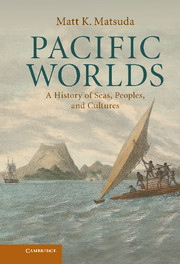Book contents
- Frontmatter
- Contents
- Illustrations
- Maps
- Acknowledgments
- Map
- Introduction: Encircling the ocean
- 1 Civilization without a center
- 2 Trading rings and tidal empires
- 3 Straits, sultans, and treasure fleets
- 4 Conquered colonies and Iberian ambitions
- 5 Island encounters and the Spanish lake
- 6 Sea changes and spice islands
- 7 Samurai, priests, and potentates
- 8 Pirates and raiders of the Eastern seas
- 9 Asia, America, and the age of the galleons
- 10 Navigators of Polynesia and paradise
- 11 Gods and sky piercers
- 12 Extremities of the Great Southern Continent
- 13 The world that Canton made
- 14 Flags, treaties, and gunboats
- 15 Migrations, plantations, and the people trade
- 16 Imperial destinies on foreign shores
- 17 Traditions of engagement and ethnography
- 18 War stories from the Pacific theater
- 19 Prophets and rebels of decolonization
- 20 Critical mass for the earth and ocean
- 21 Specters of memory, agents of development
- 22 Repairing legacies, claiming histories
- Afterword: World Heritage
- Notes
- Index
Afterword: World Heritage
Published online by Cambridge University Press: 05 June 2012
- Frontmatter
- Contents
- Illustrations
- Maps
- Acknowledgments
- Map
- Introduction: Encircling the ocean
- 1 Civilization without a center
- 2 Trading rings and tidal empires
- 3 Straits, sultans, and treasure fleets
- 4 Conquered colonies and Iberian ambitions
- 5 Island encounters and the Spanish lake
- 6 Sea changes and spice islands
- 7 Samurai, priests, and potentates
- 8 Pirates and raiders of the Eastern seas
- 9 Asia, America, and the age of the galleons
- 10 Navigators of Polynesia and paradise
- 11 Gods and sky piercers
- 12 Extremities of the Great Southern Continent
- 13 The world that Canton made
- 14 Flags, treaties, and gunboats
- 15 Migrations, plantations, and the people trade
- 16 Imperial destinies on foreign shores
- 17 Traditions of engagement and ethnography
- 18 War stories from the Pacific theater
- 19 Prophets and rebels of decolonization
- 20 Critical mass for the earth and ocean
- 21 Specters of memory, agents of development
- 22 Repairing legacies, claiming histories
- Afterword: World Heritage
- Notes
- Index
Summary
At midnight on January 1, 2000, the world's attention turned toward an unlikely place: a small, uninhabited island, part of the Kiribati group in the Pacific. There, as the day changed across the International Date Line, President Teburoro Tito lit a torch and welcomed the world to the new millennium. Within hours, the Date Line would pass toward the western Pacific, triggering celebrations in New Zealand, the Melanesian Islands, and on toward Australia. In Aotearoa, Maori communities greeted the night with chants and songs. In longitudinal sections just hours apart, celebrations began in Sydney harbor with tall ships and fireworks, in Tokyo with the ringing of ancient bells, and in Hong Kong with cheering flotillas. It was a moment for the world.
As peoples of the Pacific celebrated the new millennium in great Asian metropolises and small island towns and villages, Kiribati pondered its future. The archipelago, encompassing the Gilbert, Ellice, Phoenix, and Line Islands, is officially the Republic of Kiribati. The islands are for the most part low lying atolls, but their encompassing waters are enormous, about the size of the continental United States. In the west, the capital, Tarawa, lies adjacent to the Marshall Island of Micronesia and north of the Solomons and Vanuatu of Melanesia. The republic stretches north of Fiji, Tonga, Samoa, and the Cook Islands. The Line Islands at the eastern end lie between Hawai‘i and French Polynesia. The islands fall both north and south of the equator and in the eastern and western hemispheres, giving them a unique claim to focus the Pacific and the world.
- Type
- Chapter
- Information
- Pacific WorldsA History of Seas, Peoples, and Cultures, pp. 375 - 378Publisher: Cambridge University PressPrint publication year: 2012



